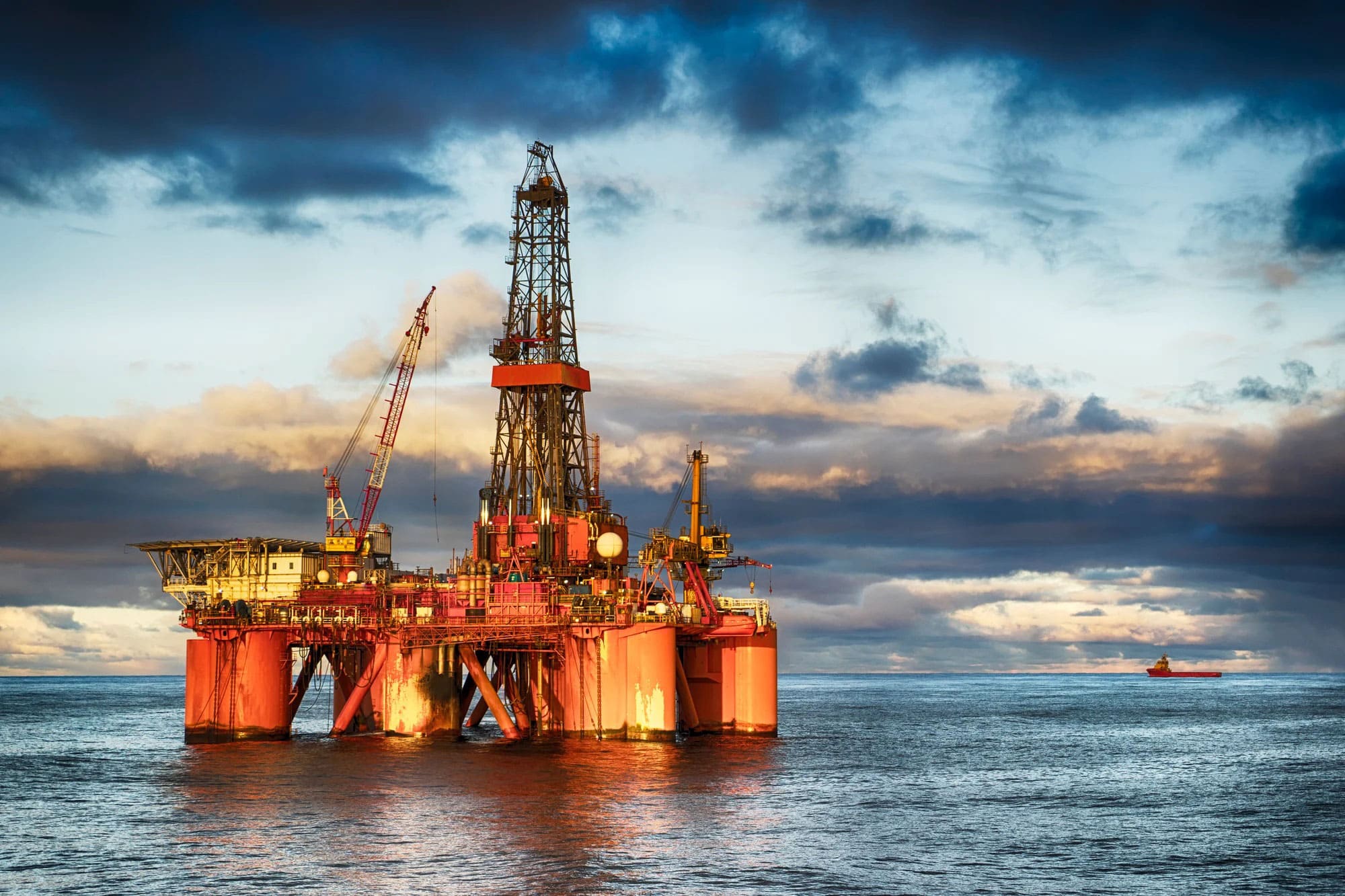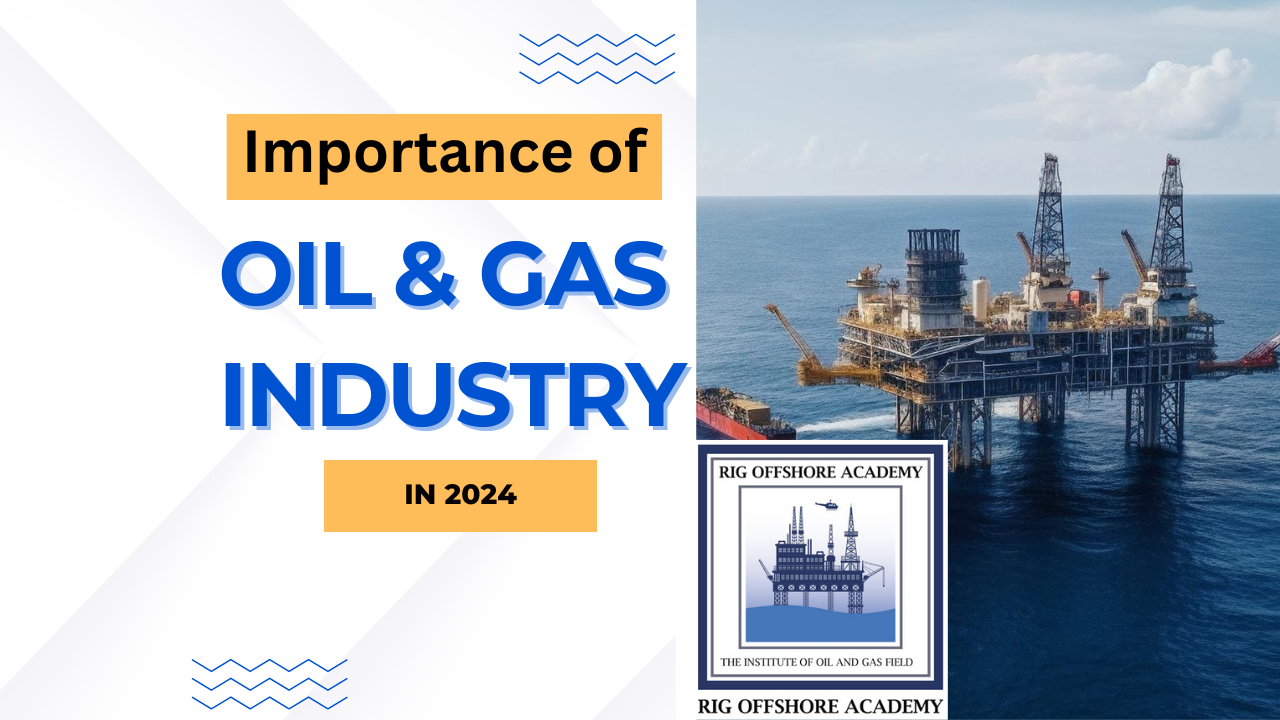

Oil & Gas Diploma Course
Eligiblity
M-Tech, B-Tech
Diploma,
PG, Degree, +2
Course Duration
6 Months
Course Details
The ideal route to take if you want to work in the oil and gas sector is an oil and gas course. One of the largest industrial sectors in both India and the entire world is the oil and gas industry. One area where a nation’s economy greatly affects is oil and gas. In a nation like India, it is one of the fastest-growing industries.
For those looking to work in this industry, Rig Offshore Academy offers a diploma in oil and gas engineering. The technical and managerial abilities required for employment in the oil and gas industry are provided by this Program. As you go through the course’s sections, you’ll notice how much in-depth information is offered. Through the Oil and Gas Course, even people with a +2 degree or undergraduate status can obtain employment in this industry.
Benefits
-
International certification in Oil and Gas
-
Oil and Gas certification creates career opportunities and strengthens their ability to move across worldwide oil and gas sector
-
Career opportunities for Oil and Gas are in Refineries, Rigs and Power plants all over the world
-
More Job opportunities
-
Better Job opportunities
-
Global Job opportunities
-
Transferrable Skills
Job Oppertunities
Drilling engineers play an important role in the oil and gas sector, where they plan, design, and supervise drilling operations to extract oil or gas from subterranean reservoirs. Their job description and work tasks often include the following:
- Well Planning and Design: Drilling engineers are in charge of creating well plans that specify the location, depth, and trajectory of the well. They establish optimal drilling tactics by combining geological data, reservoir information, and engineering concepts.
- Cost Estimation and Budgeting: Drilling engineers estimate drilling costs and create project budgets. They assess equipment, manpower, resources, and logistical requirements to guarantee that projects are finished within budget.
- Equipment Selection and Procurement: Drilling engineers choose and purchase the equipment and materials required for drilling operations. This comprises drilling rigs, casing, drill bits, mud systems, and other specialised tools and equipment.
- Risk Assessment and Mitigation:Drilling engineers detect potential drilling-related risks and hazards, such as well blowouts, formation instability, and equipment failure. They establish risk mitigation methods and contingency plans to reduce the possibility of accidents and protect personnel and the environment.
- Supervision and management: Drilling engineers manage drilling operations on-site, coordinating the actions of drilling crews, contractors, and service suppliers. They guarantee that drilling activities are carried out as planned, in accordance with safety requirements and environmental standards.
- Data Analysis and Interpretation: Drilling engineers examine drilling data, such as mud logs, wellbore surveys, and formation samples, to assess drilling performance and identify potential issues or areas for improvement. They use this data to make judgments in real time and modify drilling parameters as needed.
- Troubleshooting and Problem Resolution: Drilling engineers handle problems that occur during drilling operations, such as clogged pipes, lost circulation, or formation damage. They collaborate with interdisciplinary teams to develop solutions that reduce downtime.
- Wellbore Stability and Integrity: Drilling experts monitor the stability and integrity of the wellbore during the drilling process, looking for indicators of instability, fluid ingress, or wellbore collapse. They take steps to safeguard the well’s integrity and prevent problems like casing failures and wellbore collapse.
- Regulatory Compliance: Drilling engineers ensure that drilling activities meet legal requirements and industry standards, such as environmental rules, safety measures, and permitting processes.
- Documentation and Reporting: Drilling engineers keep extensive records of drilling operations, such as daily drilling reports, equipment inventories, and safety checks. They create reports for management, regulatory agencies, and other stakeholders that offer updates on project progress and performance.
An energy engineer focuses on increasing energy efficiency and sustainability across multiple industries. Here are five important features of their job description and professional responsibilities:
- Energy audits: Conducting energy audits to determine the energy use of buildings, industrial processes, and systems. This includes assessing energy use patterns, finding inefficiencies, and offering methods to improve energy efficiency.
- Designing energy systems: Creating and designing energy systems that use renewable energysources,s including solar, wind, and geothermal power. Energy engineers build methods that lessen reliance on fossil fuels while minimizing environmentaleffectst.
- Energy Management: Implementing energy management measures to lower energy use and expenditures. This could include supervising and monitoring the installation and performance of energy-efficient technologies like LED lighting, HVAC systems, and insulation upgrades.
- Renewable Energy Projects: Planning and carrying out renewable energy projects, such as solar panel installations or wind turbine farms. To ensure the successful implementation of renewable energy programs, energy engineers conduct site inspections, feasibility studies, system design, and project management.
- Regulatory Compliance: Keeping up with energy rules and standards, as well as meeting municipal, state, and federal energy efficiency criteria. Energy engineers can also help with acquiring permits and certifications for energy-related projects, such as LEED for green buildings.
An engineering geologist is a practitioner who uses geological ideas in engineering practice. Here are five main characteristics that describe their function and work responsibilities:
- Site Investigation and Assessment: Engineering geologists evaluate geological conditions on construction sites to identify potential risks such as landslides, soil instability, and groundwater issues. They undertake field investigations, gather samples, and analyze data to assess the geological features of the location.
- Geotechnical Analysis: They assess geological data and make recommendations for engineering designs and construction projects. This could include examining soil and rock qualities, assessing slope stability, and determining the suitability of foundation materials.
- Risk Management: Engineering geologists play an important role in risk management by identifying and minimizing geological hazards that may affect infrastructure projects. They devise techniques to reduce the risks connected with geological phenomena such as earthquakes, subsidence, and erosion.
- Collaboration between Engineers and Planners: They collaborate closely with engineers, planners, and other construction professionals to ensure that geological factors are factored into the design and planning phases. This partnership contributes to improved project outcomesand reducesd potential geological risks.
- Report Writing and Communication: Engineering geologists provide extensive reports that include their findings, analysis, and suggestions. They communicate difficult geological concepts to a diverse variety of stakeholders, including clients, regulatory agencies, and project teams, to ensure that all project participants understand the geologicalconsequences and offered solutions.
A geochemist is a scientist who focuses on the chemical composition and processes of the Earth’s crust, which includes rocks, minerals, water, and soil. Here are five important features of a geochemist’s description and job duties:
- Chemical analysis: Geochemists utilize a variety of analytical techniques to investigate the chemical composition of geological materials. This entails taking samples from various habitats, such as rocks, sediments, or groundwater, and studying them to determine their elemental and isotopic compositions.
- Understanding Earth processes: Geochemists study the chemical reactions and processes that occur within the Earth’s crust, including weathering, erosion, and mineral production. By examining these processes, they can learn about geological phenomena like as ore deposit creation, groundwater migration, and the evolution of the Earth’s atmosphere and oceans over time.
- Environmental Assessment: Geochemists play an important role in environmental assessment and cleanup efforts. They study soil, water, and air samples to determine the environmental impact of human activities like mining, industrial pollution, and agricultural practices. Their findings help to shape environmental management and conservation initiatives.
- Exploration and Resource Management: Geochemists contribute to the discovery and management of natural resources such as minerals, fossil fuels, and groundwater. They use geochemical techniques to identify and classify possible resource deposits, determine their quality and quantity, and devise long-term extraction strategies.
- Interdisciplinary Collaboration: Geochemistry is a highly interdisciplinary field that requires collaboration with geologists, hydrologists, environmental scientists, and other earth scientists. Geochemists frequently collaborate in research teams to answer complicated questions concerning the Earth’s composition, history, and dynamics, bringing together experts from several disciplines to gain a comprehensive understanding and solutions.
A geophysicist is a scientist who studies the physical properties of the earth and utilizes various techniques to understand its structure, composition, and processes. Here are five key aspects of a geophysicist’s job description and work tasks
- Data Collection and Analysis: Geophysicists collect and evaluate data through a range of methods, including seismic surveys, gravity measurements, electromagnetic surveys, and remote sensing techniques. They use this data to better comprehend subsurface structures, geological features, and resource possibilities.
- Interpretation of geological features: Geophysicists use seismic, gravitational, magnetic, and other geophysical data to locate and define geological phenomena including faults, folds, sedimentary basins, and mineral deposits. This information is critical for exploration and resource appraisal in businesses like as oil and gas, mining, and environmental consultancy.
- Modeling and predictions: Geophysicists use mathematical models and computer simulations to forecast subsurface conditions, geological dangers, and the behavior of natural phenomena like earthquakes and volcanic eruptions. These models assist in making informed judgments regarding resource exploration, engineering projects, and risk assessment.
- Collaboration & Communication: Geophysicists frequently collaborate on multidisciplinary teams that include geologists, engineers, and other sciences. They work with colleagues to combine geophysical data with geological, geochemical, and engineering data to achieve a more complete understanding of subsurface settings. Effective communication of findings and recommendations via reports, presentations, and meetings is also an important part of the work.
A geoscientist is a specialist who examines the Earth’s structure, composition, and processes to better comprehend its past, present, and future. Here are five important features of their job description and professional responsibilities:
- Research and analysis: Geoscientists perform study to better understand geological events like earthquakes, volcanoes, erosion, and sedimentation. They use geological data, such as maps, satellite photos, and rock samples, to understand geologic processes and structures.
- Fieldwork: Geoscientists frequently spend time in the field gathering information and samples. This could include conducting geological surveys, mapping geological features, and collecting rock or soil samples for study. Fieldwork is vital for obtaining firsthand knowledge of the Earth’s surface and subsoil.
- Laboratory Work: Geoscientists also work in laboratories, analyzing samples gathered during fieldwork. They employ a variety of techniques to investigate the composition and qualities of rocks, minerals, and fossils, including microscopy, spectroscopy, and chemical analysis. Geoscientists can learn more about geological processes and history by working in laboratories.
- Modeling and interpretation: Geoscientists employ computer modeling and simulation software to analyse and interpret geological data. They create models that recreate geological processes and forecast future changes in the Earth’s structure and ecosystem. Geoscientists use modeling to test ideas, make predictions, and better comprehend complicated geological processes.
- Communication, Reporting: Geoscientists present their discoveries in reports, presentations, and scholarly publications. They frequently work with other scientists, engineers, policymakers, and stakeholders to exchange knowledge and insights on geological challenges. Effective communication is required to transmit complicated geological concepts to varied audiences and inform decision-making processes.
A hydrographic surveyor maps and charts bodies of water, such as oceans, rivers, lakes, and reservoirs. Their work is critical for a variety of applications, including navigation, resource exploitation, environmental monitoring, and infrastructure building. Here are five important features of a hydrographic surveyor’s job description and tasks:
- Data Collection: Hydrographic surveyors utilize specialized equipment like sonar, GPS, and echo sounders to gather information about the shape, depth, and properties of water bodies. They may collect accurate and detailed data from boats, ships, or specialized survey vessels.
- Data Processing and Analysis: After gathering survey data, hydrographic surveyors process and evaluate it with software tools and methodologies. They use the data to build precise maps, charts, and computer models of the underwater environment, including hazards, navigation channels, and other pertinent characteristics.
- Quality Assurance: Hydrographic surveyors use strict quality assurance methods to verify that survey data is accurate and reliable. This includes validating data consistency, calibrating equipment, and performing tests to reduce mistakes and uncertainties in collected data.
- Report Generation:Hydrographic surveyors create thorough reports and deliverables based on their survey results. These studies may include extensive charts, maps, and technical documents that are used by a wide range of stakeholders, including government organizations, marine authorities, engineering businesses, and research institutions.
- Collaboration & Communication: Hydrographic surveyors frequently work with diverse teams that include marine scientists, engineers, cartographers, and project managers. Effective communication skills are required to coordinate survey activities, provide findings, and answer client needs and project objectives.
- Resource Evaluation: Mining engineers evaluate the quality and quantity of mineral reserves in a specific location. This includes conducting geological surveys, interpreting data, and determining the economic sustainability of mining activities.
- Mining Planning and Design: Mining engineers create precise strategies for obtaining minerals from the soil in the most efficient and cost-effective way. This includes planning mine layouts, establishing the optimum extraction processes, and maximizing the utilization of equipment and resources.
- Safety and Environmental Compliance: Mining engineers are most concerned with ensuring worker safety and limiting the environmental impact of their operations. They create and implement safety measures, monitor compliance with regulations, and aim to reduce the environmental impact of mining activities through responsible practices and technology.
- Equipment Selection and Maintenance: Mining engineers are responsible for selecting the right equipment and technology for mining operations, taking into account issues like efficiency, productivity, and safety. They also monitor equipment maintenance and repair to ensure peak performance and minimal downtime.
- Project Management: Mining engineers manage all aspects of mining projects, from early planning and development to production and closure. This includes managing finances, timelines, and resources, as well as collaborating with otherprofessionals,s such as geologists, environmental scientists, and equipment suppliers, to ensure that mining operations run smoothly.
In the oil and gas business, mudloggers play an important role in drilling operations. Their major task is to monitor and evaluate drilling mud and rock cuttings during the drilling operation. Here are five important features of a mudlogger’s job description and tasks:
- Monitoring drilling parameters: Mudloggers constantly monitor drilling parameterssuch ash drilling pace, mud flow rate, and mud temperature. They employ sophisticated equipment and software to monitor these parameters in real time.
- Collecting and analyzing rock cuttings: Mudloggers collect rock cuttings that are brought to the surface by drilling mud. They thoroughly examine the cuttings to determine the lithology (rock type), formation characteristics, and possible hydrocarbon content. This research allows geologists and engineers to make more educated drilling decisions.
- Maintaining Data Logs: Mudloggers keep extensive records of their drilling efforts, including lithology descriptions, gas readings, and drilling progress. These logs provide an invaluable record of the drilling operation and are utilized for geological study and well planning.
- Detecting formation fluids: Mudloggers detect the presence of formation fluids (such as oil, gas, or water) during drilling. They use gas detection technology to monitor the hydrocarbon concentration in the drilling mud and identify prospective areas of interest.
- Communicating with the Drilling Team: Mudloggers work closely with the drilling team, which includes geologists, engineers, and drillers, to offer real-time updates on the drilling operation. They share any noteworthy observations or anomalies and collaborate to improve drilling performance and reduce hazards.
- Reservoir Analysis and Management: Petroleum engineers assess subterranean oil and gas reserves to identify their size, depth, and composition. They evaluate data using specialist tools and procedures and devise extraction tactics that are efficient.
- Drilling operations: Petroleum engineers plan and manage drilling operations to recover oil and gas from subterranean reservoirs. This includes choosing drilling technologies, planning wellbores, and tracking drilling progress to assure safety and efficiency.
- Production Optimization:Petroleum engineers work to increase the production of oil and gas wells by implementing measures to improve reservoir recovery. This may include hydraulic fracturing (fracking), well stimulation, and secondary recovery procedures such as water injection.
- Health, Safety, and Environmental Compliance: Petroleum engineers must ensure that drilling and production processes adhere to health, safety, and environmental requirements. They identify hazards, implement safety standards, and create backup plans to avoid accidents and reduce environmental damage.
- Research and development: Petroleum engineers frequently engage in research and development activities to improve extraction processes, create new technologies, and handle industry issues. They work with scientists, academics, and industry specialists to improve and advance petroleum engineering.
A wellsite geologist plays an important role in oil and gas exploration and production. Here are five important features of their job description and professional responsibilities:
- Geological Monitoring: Wellsite geologists monitor and analyze geological formations discovered during drilling operations. They review drill cuttings, core samples, and other data to identify probable hydrocarbon-bearing formations, evaluate reservoir attributes, and understand the subsurface geologic structure.
- Data Interpretation: Well site geologists assess geological data in real time and provide insights to drilling engineers and operations staff. They use their knowledge to advise on the best location for wells, detect drilling dangers like unstable formations or faults, and provide recommendations to improve drilling productivity and safety.
- Formation Evaluation: Well site geologists evaluate formations to determine the quality and productivity of hydrocarbon reserves. This entails examining well logs, including gamma ray, resistivity, and porosity logs, to determine reservoir parameters such as lithology, fluid content, and porosity. This information is useful forreservoir characterizationn and well completion decisions.
- Sampling and Test: They managethe collectiong and testing of rock and fluid samples collected during drilling operations. These samples are tested in laboratories to determine attributes including rock composition, fluid type, pressure, and temperature, all of which are important for reservoir characterisation and production planning.
- Reporting and Documentation: Wellsite geologists keep extensive records of drilling operations, geological observations, and data analysis outcomes. They write daily reports detailing drilling progress, geological results, and any concerns that arise during operations. These reports are critical for decision-making, regulatory compliance, and long-term planning.
An Environmental specialist is responsible for ensuring that organizations follow environmental standards, reduce their environmental impact, and promote sustainability. Here are five important features of their job description and professional responsibilities:
- Environmental Compliance: Monitoring and ensuring adherence to local, state, and federal environmental standards and permits. This could include conducting audits, inspections, and assessments to identify potential environmental concerns and establish mitigation solutions.
- Environmental Impact Assessment: Environmental impact assessments (EIAs) are conducted for proposed projects or developments to analyze potential environmental effects and recommend solutions to reduce or mitigate negative impacts. This includes evaluating data, performing field surveys, and creating reports for regulatory bodies and stakeholders.
- Sustainability Initiatives: Creating and implementing strategies to reduce resource consumption, waste generation, and promote environmental stewardship within the organization. This could include measures like energy efficiency programs, waste reduction techniques, and sustainable sourcing procedures.
- Environmental Monitoring and Reporting: Monitoring environmental indicators including air and water quality, soil contamination, and biodiversity helps to measure environmental performance and identify areas for improvement. Environmental specialists gather and analyze data, write environmental reports, and present results to stakeholders, regulatory bodies, and the general public.
Business and management positions in the oil and gas business have a wide range of responsibilities, from strategic planning to operational monitoring. Below are five main factors that outline the job description and work duties related to these roles:
- Strategic planning and decision-making: Business and management specialists in the oil and gas business are in charge of creating and implementing strategic plans to increase the company’s profitability and operational efficiency. This includes monitoring market trends, assessing possible investments, and making sound decisions to propel the firm ahead.
- Financial Management: Financial management is an important part of oil and gas firm operations. Professionals in these professions are in charge of budgeting, forecasting, financial reporting, and regulatory compliance. They also keep track of spending, examine financial performance, and look for ways to save money and generate more revenue.
- Project Management: The oil and gas sector is distinguished by large-scale undertakings such as exploration, drilling, and production efforts. Business and management professionals play an important role in guiding these projects from start to finish. This comprises planning and scheduling activities, allocating resources, managing risks, and assuring project completion on schedule and within budget.
- Supply Chain Management: Effective supply chain management is critical to the seamless operation of oil and gas enterprises. This sector’s business and management specialists are in charge of optimizing the supply chain, which includes procurement, logistics, inventory management, and distribution. They collaborate closely with suppliers, contractors, and other stakeholders to ensure that the appropriate supplies and resources are accessible when required.
- Stakeholder Relations and Compliance: Oil and gas firms must maintain strong relationships with their stakeholders, which include government agencies, regulatory organizations, investors, and local populations. Business and management experts must communicate with these stakeholders, address complaints, and ensure compliance with applicable laws and regulations. They also play an important part in corporate social responsibility programs and sustainability efforts.
Supervisors of non-destructive testing (NDT) play a critical role in guaranteeing the quality and integrity of materials and components used in a variety of industries. Here are five important features of their job description and professional responsibilities:
- Supervision and Leadership: NDT supervisors are in charge of leading a team of NDT technicians or inspectors. They offer direction, assistance, and leadership to ensure that testing procedures are completed properly and efficiently.
- Quality Assurance: NDT supervisors are responsible for ensuring that all testing techniques adhere to industry standards and regulations. To ensure the quality and integrity of materials and components, they examine test findings, check conformity with requirements, and rectify any deviations or discrepancies that arise.
- Training and Development: NDT supervisors frequently instruct new technicians and inspectors on testing methodology, equipment operation, safety protocols, and quality control processes. They provide continuing support and mentorship to help their team members improve their skills and expertise.
- Equipment Maintenance and Calibration: NDT supervisors are in charge of maintaining, calibrating, and repairing testing equipment to assure accuracy and reliability. They may negotiate with equipment providers, schedule routine maintenance tasks, and troubleshoot problems in order to reduce downtime and maintain peak performance.
NDT (Non-Destructive Testing) technicians play an important role in guaranteeing the safety and integrity of materials and structures across a wide range of industries. Here are five important features of their job description and professional responsibilities:
- Conducting inspections: NDT technicians employ a variety of testing procedures, including ultrasonic, radiographic, magnetic particle, liquid penetrant, and visual inspections, to determine the integrity of materials, components, and structures without causing harm. They use defined techniques and protocols to identify faults, discontinuities, and abnormalities in materials or welds.
- Interpretation of Test Results: Following inspections, NDT Technicians analyze and interpret test data to establish the condition and quality of the tested materials. They assess the relevance of any discovered faults or abnormalities and issue detailed reports detailing their findings and recommendations for next steps.
- Equipment Setup and Calibration: NDT Technicians are in charge of setting up and calibrating testing equipment and instruments to provide accurate and reliable results. They follow suitable equipment operating and maintenance practices to ensure the testing process’s integrity and efficacy.
- Adhering to safety standards: Safety is critical in NDT activities. NDT technicians must follow strict safety protocols and regulations to safeguard themselves, their coworkers, and the environment from potential risks related with testing methods and equipment, as well as the materials under inspection.
- Documentation and Reporting: NDT technicians keep detailed records of inspection activities, such as test protocols, equipment calibration logs, inspection reports, and other pertinent documents. They successfully explain their findings to customers, engineers, supervisors, and other stakeholders, ensuring a thorough knowledge of the inspection results and any advised measures.
NDT (Non-Destructive Testing) professionals serve a critical role in verifying the integrity and safety of materials, components, and structures while causing no damage. Here are five important features of their job description and professional responsibilities:
- Inspection and Testing: NDT specialists use a variety of inspection and testing techniques to find defects, flaws, or irregularities in materials or structures. This could include employing ultrasonic testing, radiographic testing, magnetic particle testing, dye penetrant testing, eddy current testing, or visual inspection.
- Interpretation of results: After inspecting and testing, NDT personnel must appropriately interpret the data. They analyze data, assess the state of materials or components, and determine if they meet quality standards and requirements. This necessitates a comprehensive understanding of NDT principles, procedures, and industry standards.
- Documentation and Reporting: NDT professionals document their findings and create detailed reports that summarize the outcomes of inspections and tests. These reports usually include information regarding the type and location of flaws, the severity of any anomalies discovered, and suggestions for correction or further investigation.
- Equipment Maintenance and Calibration: NDT personnel are in charge of maintaining and calibrating NDT equipment to provide accurate and reliable testing results. This includes performing routine maintenance, diagnosing equipment difficulties, and calibrating instruments in accordance with manufacturer specifications and industry standards.
- Safety and compliance: NDT technicians stress safety in all parts of their work. They follow safety rules and procedures to reduce the dangers connected with NDT tasks, including as exposure to radiation or toxic materials. They also ensure that their work meets quality and safety standards by adhering to appropriate rules, codes, and standards governing NDT techniques.
Other Blogs
Best Oil & Gas Diploma Course In Calicut, Kerala, India | Rig Offshore Academy Get Admission to Oil and Gas course today …
Top 10 Oil & Gas Industry Courses 1. Diploma in Petroleum Engineering 2. Diploma in Drilling Technology 3. Oil and Gas diploma …
Explore Oil and Gas High-Paying Job Opportunities | Rig Offshore Academy RIG OFFSHORE ACADEMY-Oil and Gas, NDT level II, QA/QC, diploma in …
Importance of Oil and Gas Industry in 2024 A question which is very relevant at present is, What is the importance of …




